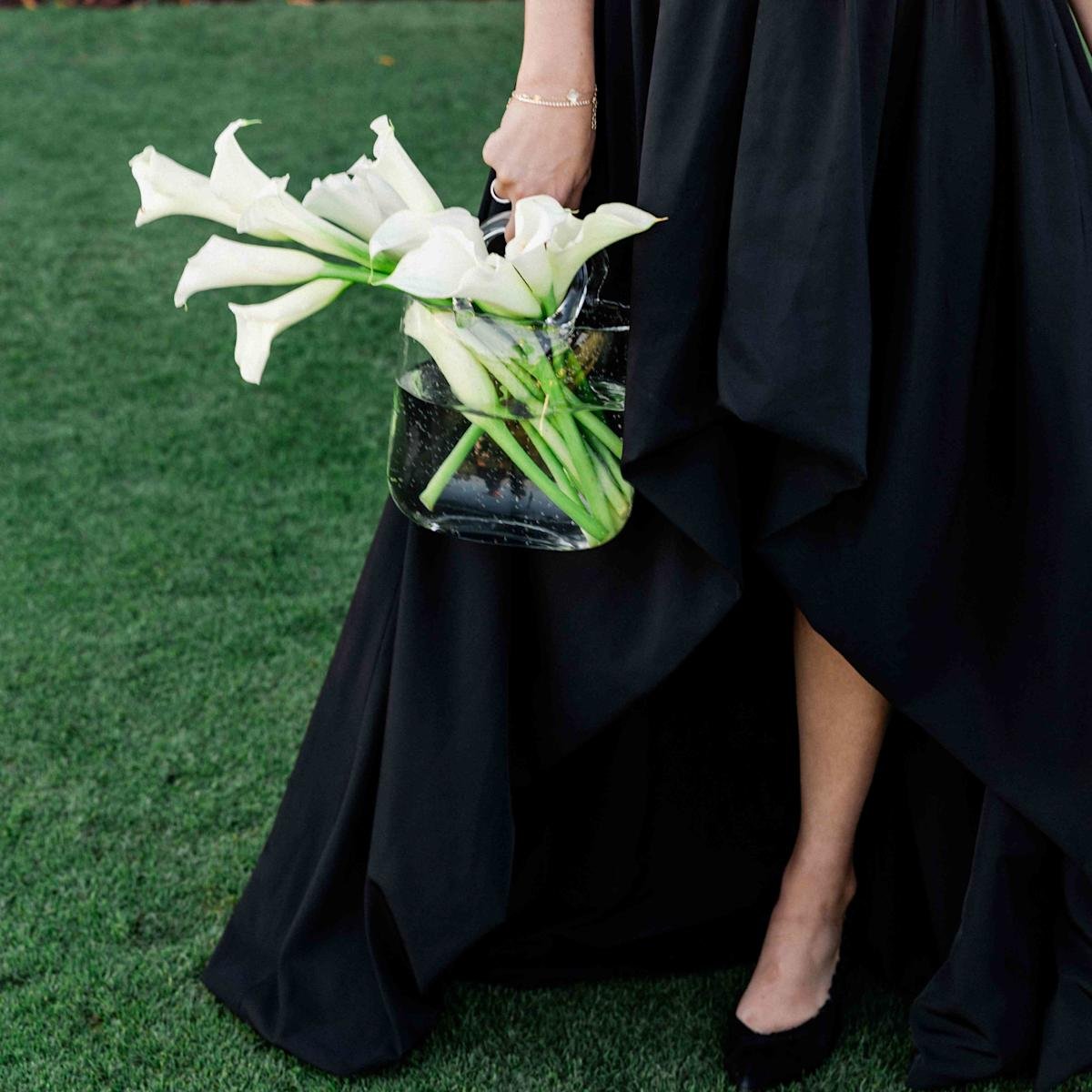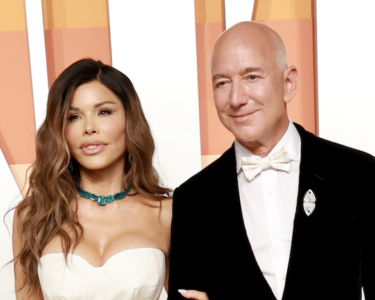Out of all the things guests will remember about your wedding—from the food and the band to the playlist and the dress, it’s typically the florals that have the biggest visual impact. Whether it’s in your artful centerpieces that include a mix of moody blooms with votive candles or your bright bouquet that perfectly complements your chosen aesthetic, even the smallest flowers can make an eye-catching statement. While florals are often selected for their color and seasonality, they can be imbued with meaning—particularly when it comes to weddings. And as these celebrations become more and more personalized, know that there are countless ways to infuse greater significance into your décor.
“Choose a flower representative of your culture,” says Christine Janda, a Chicago-based wedding planner and floral designer. “A client of ours featured tulips to honor her husband’s Turkish heritage, as it’s Turkey’s national flower. We’ve used orchids to [reference] a bride’s past visit to an orchid farm in Thailand, and ikebana floral design for a couple’s Japanese heritage. You could feature hydrangeas because they remind you of your grandmother’s garden, or a color palette in the hue of a sunset from the night you got engaged.” However, in addition to choosing florals that are particularly relevant to your own love story, some blooms also have time-honored meanings you may want to incorporate.
Meet the Expert
-
Schentell Nunn is the founder and lead designer at Offerings, a Los Angeles-based bespoke floral studio.
-
Staci Miller is an event designer for HMR Designs, a Chicago-based design firm that produces luxury events nationwide.
Below, the experts explain all of the meanings behind some of the most popular wedding flowers. From tulips and roses to allium and anemones, here’s what to know about your florals.
Related: 6 Wedding Flower Trends Florists Are Pushing for in 2025
Allium

Though it’s actually a member of the onion family, allium comes with beautiful symbolism: The plant represents unity for the way multiple blossoms grow from a single bulb. “They have a short season [late spring to early summer], but exemplify pure joy to me,” Janda says. “Cheery in their lavender hue, they form a near-perfect sphere, and add such surprise and delight to a centerpiece.”
Amaranthus

Unlike allium, amaranthus boasts a much longer lifespan—both before and after it’s cut. For this reason, the flower has come to symbolize eternity, immortality, and everlasting love. “There is no other shape like the amaranthus; they’re drop-dead gorgeous and add depth and movement and drama,” Janda says. “I love them in installations or designs with height—the higher the better!”
Anemones

Elena Vilkova / Getty Images
A wide variety of meanings have been attached to the anemone flower: excitement and anticipation thanks to their early spring bloom, protection for the way their petals close up at night, as well as peace and luck. Their colors also evoke meaning: white for purity, red for love, and purple for protection. Ultimately, it’s a statement-making flower. “I love the boldness an anemone can bring; it’s so whimsical in shape with its soft petals and whirly stems,” Janda says. “I find them to be very playful.”
Calla Lilies

As a time-honored wedding flower, calla lilies represent devotion, holiness, and purity of the bride. But if all that feels a little old-school for you, know that you can still appreciate them for their stunning beauty. “With clean lines that are also seductively curvaceous, calla lilies make for a sleek bouquet, and I love them best in monofloral designs,” Janda says. And despite their traditional meaning, Staci Miller, an event designer, says she loves them for modern weddings. “Calla lilies are typically used for more modern brides,” she says. “Think clean lines, modernity, simple elegance, and classic style.”
Chamomiles

Chamomiles are associated with joy and positivity, which makes sense since “you can’t help but smile when you look at them,” Janda says. “I love them in boutonnieres, and small touches in low centerpieces for a surprise-and-delight moment.” The tiny flower is a perfect fit for rustic-inspired bouquets at outdoor weddings. “They provide that ‘picked straight out of a field’ look,” Janda says.
Craspedia

Nelson Hernandez Chitiva / Getty Images
These round yellow globes, often referred to as “billy balls,” represent wholeness, completeness, and good health. For Janda, these florals even have a personal meaning. “They remind me of my late brother; they are cheery like the sun, just like him,” she says. “At every family gathering, we sneak a few in.” These flowers are also easy to preserve, making them the perfect nod to a long-lasting marriage.
Dahlias

As the national flower of Mexico, dahlias represents pride and inner strength. They’re the perfect unique-meets-classic bloom. “Dahlias are a timeless and dreamy alternative to roses and peonies,” says Schentell Nunn, a floral designer. “They can elevate any centerpiece, adding incredible texture and richness.” Miller agrees that this flower is the perfect fit for someone wanting something out of the ordinary. “Dahlia brides tend to lean a little more boho and natural, although that isn’t always the case! Dahlias can be mixed into other arrangements to add lots of texture or when large focal blooms are important.”
Hydrangeas

Hydrangeas are thought to be tied to deep emotion, representing understanding and apology. To wedding florists, they embody a beloved versatility. “Hydrangeas are incredibly special because they are so versatile,” Nunn says. “There is no limit to creativity when working with hydrangea, whether creating whimsical gardens or modern architectural installations.” Plus, they come in a range of hues. While they’re most well-known for their shades of blue, they also appear in pink, white, and purple.
Related: 28 Beautiful Hydrangea Centerpieces for Your Wedding Reception
Lavender

D. Giraldez Alonso / Getty Images
This fresh floral is typically associated with serenity and tranquility. However, in recent decades, it has also become a symbolic marker for LGBTQ+ couples and weddings, appearing as a marker of resistance, strength, and peace. “Lavender is beautiful in weddings that are seeking a whimsical touch that is less traditional,” Nunn says. “Creating moments of ‘gardenscapes’ on aisles or even tables, and using plants in pots, as well as within the tablescapes, are beautiful ways to bring these blooms into your celebrations.”
Lilacs

Lilacs mark the season of renewal and have come to represent springtime, rebirth, and first loves. However, they’re also beloved for their scent. “Lilacs are very fragrant, so I find that a lot of brides request lilac for the fragrance alone,” Miller says. “The flower tends to pair [well] with the peony; these are another variety that is very seasonal, leaning toward spring.”
Orchids

A truly stunning—and statuesque—flower, orchids are often said to represent not only beauty itself, but also love, fertility, and virility; the ancient Greeks would eat various types of orchids in hopes of having a boy or a girl. But no matter what it symbolizes to you, and regardless of the variety you choose, “orchids are always impactful and elegant,” Nunn says. “Oncidium orchids have become extremely popular, adding unparalleled texture to bridal bouquets, centerpieces, and even bar and installation pieces.”
Peonies

A peony’s symbolism is tied to its colors, and in its most common hue—a blushing pink—it symbolizes love and affection. (Wealth, honor, and good fortune have also been ascribed to the flower.) “Peonies are unapologetically feminine—fragrant, romantic, soft, and beautiful,” Janda says. “They’re the ultimate spring wedding flower.” Miller agrees, adding that they’re her favorite flowers to turn to for such a celebration. “Peonies lean toward more of a garden aesthetic,” she says. “They’re pretty, lush, textural, and dreamy.”
Poppies

Traditionally, poppies have a less romantic meaning, often representing sleep and death. However, in modern times, those interpretations have come to symbolize peace and remembrance. Regardless, their vibrant orange-red hue makes them a stunning addition to any nuptial-related installations. They’re one of Miller’s favorites to use for a couple’s big day. “I love them for their unique properties and what they add to floral arrangements,” she says.
Ranunculuses

“Ranunculus is a classic bloom that is not only elegant, but also hardy in a multitude of uses,” Nunn says. Their blooms have thick layers of delicate petals; they showcase strength in softness—and are well-known for their beauty and charming features. “These blooms can be a beautiful way to build cohesiveness throughout your day, from ceremony to reception,” she adds.
Roses

Traditionally known as the flower of love, roses—especially in a classic red shade—symbolize passionate romance. As a result, they’re a fitting choice for your nuptials. With dozens of different hues and varieties, this bloom is also versatile. “I believe roses can belong in almost every setting and should be invited to almost every party!” Janda says. This year in particular, she’s loving the Moab Rose, a warm, toffee-colored bloom reminiscent of the Utah desert’s sand.
Sweet Peas

Gratitude and contentment are often associated with the sweet pea, a bloom that’s commonly used included in thank-you gifts. However, it can also symbolize pleasure, happiness and joy. Along with the daisy, it’s one of the April birth flowers, making it a fitting choice for springtime-inspired nuptials. “Sweet pea is delicate, classic, soft, and romantic,” Janda says. “It is stunning in a bridal bouquet, adding movement to any design.”
Tulips

“Tulips are similar to roses in that they are so versatile and come in so many colors and varieties,” Miller says. “They can be used alongside calla lilies in more modern arrangements, but then look equally at home next to roses and peonies in a lush, garden-style arrangement.” In terms of their symbolism, these florals represent new beginnings, a sign of the rebirth that comes with spring.
Wisterias

In Japanese culture, wisteria carries great meaning. Known as an auspicious flower due to its long lifespan and fertile traits, its symbolism has expanded to include devotion and long-lasting love. As a result, it’s a meaningful floral to have on display at your wedding. “Wisteria is best when it is focal and abundant,” Nunn says. “Building your ceremony under existing wisteria vines is an incredible way to bring life and wow to your wedding day. Some designers chose to bring faux wisteria en masse to ceiling installations to create a textural backdrop for the rest of the celebration.”
Up Next: How Much Do Wedding Flowers Cost?
Read the original article on Brides




